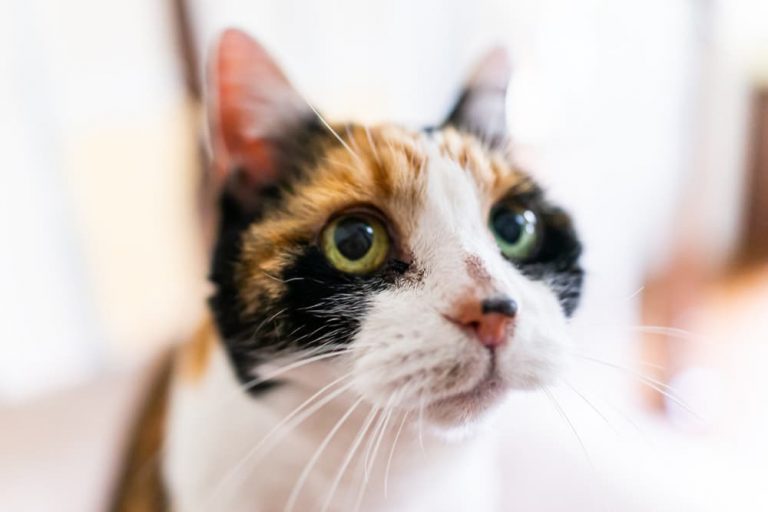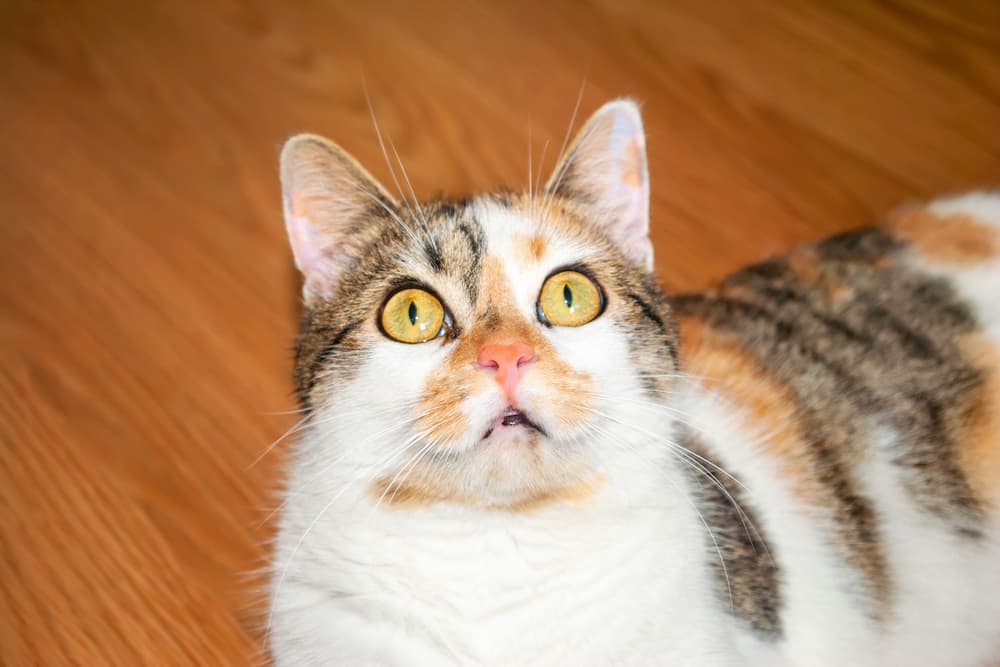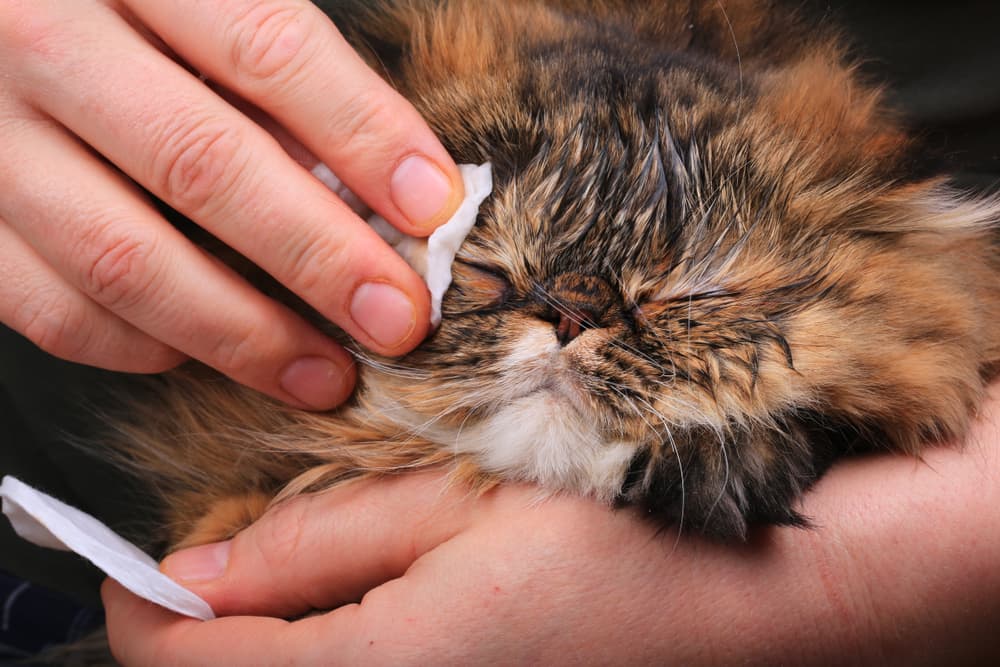Cat Chin Acne: Why it Happens and How to Help

Overview
People aren’t the only ones who can develop pimples, facial redness, and full-blown breakouts. Our feline companions can get acne too, and in their case it usually appears under the chin. Most cat chin acne cases are mild, but can sometimes become infected, and cause pain and discomfort.
With insights from four veterinarians (including a board-certified veterinary dermatologist), we’ve unpacked what you need to know about cat chin acne, including treatment and prevention options.
Since acne may be a symptom of an underlying problem—or may not even be true acne—it’s always a good idea to get in touch with your veterinarian if you’re concerned.
Can Cats Get Acne?

Yes, cats can get acne. In fact, it resembles the type that people often get. It usually takes the form of blackheads and whiteheads under the chin, but can also extend to the lips and muzzle.
Though it’s not as common, acne can sometimes emerge on other parts of a cat’s body. “Cats can have other dermatologic conditions elsewhere on the body which may look similar, or be from the same cause,” says Dr. Sasha Gibbons, associate veterinarian at Just Cats Veterinary Hospital in Stamford, Connecticut.
Cats of any age can develop acne, but some veterinarians say it’s most prevalent during middle age. And while acne can become aggressive in any breed, Persians and Himalayans are at an increased risk of idiopathic facial dermatitis and primary seborrhea, which are considered extreme forms.
The veterinary community is not precisely sure how common cat chin acne is. Some veterinarians say it’s a relatively common condition while others say it’s not as prevalent. This uncertainty is partly due to a scarcity of research on the topic.
“While this is a well-recognized problem, it is poorly studied,” says Dr. Elizabeth A. Layne, a board-certified veterinary dermatologist with BluePearl Specialty + Emergency Pet Hospital in Midvale, Utah. And since many cats have very mild signs, pet parents are less likely to take them to the veterinarian for an examination, Layne adds. So cases go unreported.
Cat Chin Acne: What Does it Look Like?

Acne on a cat’s chin usually starts out as mild black crusts and debris in the fur, and blackheads on the skin, says Layne. Blackheads form “when the hair follicles are plugged with shed skin cells and skin oil.”
A single cat pimple or even a full-blown breakout can look like dirt. “Chin acne tends to look like the common black or whiteheads that humans get, like black material stuck to the fur and skin, often with little discomfort shown by the cat,” says Dr. Klaus Earl Loft, a veterinarian at Angell Animal Medical Center in Boston. Some cats, Loft says, may experience a single breakout, “but many others will have recurring symptoms.”
Though most cases of cat chin acne are mild, they can progress, becoming “inflamed with red bumps, pus, crusting and hair loss developing. With deep infection and inflammation, the skin can become swollen, painful, and thickened,” says Dr. Lisa Goin, a veterinarian at Heart + Paw in their Glen Mills, Pennsylvania location.
Cat Chin Mites vs. Acne
Mites are small organisms that can sometimes find a home on our pets—and cats are no exception. While some cats may not show any symptoms of a mite infestation, others may develop scabbing, bumps, itching and redness, which some confuse with cat chin acne. Differentiating between the two can be difficult, as some mites are invisible to the naked eye. Work with your vet to get a proper diagnosis. Doing so will ensure you get proper treatment for your kitty.
Causes of Cat Chin Acne

Veterinarians can’t definitively point to what causes cat chin acne, but they have some theories. “Like with humans it is probably a complex interaction between skin cell turnover, skin oil composition, bacteria on the skin surface, and other unidentified factors,” says Layne.
Here we take a deeper dive into some of the most common theories of what’s behind cat chin acne.
Overproduction of the Body’s Natural Oils
The sebaceous glands generate sebum, which Loft says is a “natural, oil moisturizer.” When these glands generate an excess of sebum (a condition called seborrhea), hair follicles can become clogged. Acne occurs primarily on a cat’s chin, experts theorize, because hair follicle growth rate and skin turnover is comparatively slower in this area, says Loft.
Most cases of seborrhea are secondary—meaning that they’re the result of an underlying disease or condition. These may include hypothyroidism, fungal infections, allergies, or parasites.
Poor Self-Grooming Habits
Self-grooming serves a number of important functions for cats, one of which is to distribute sebum evenly throughout the body. When cats don’t groom adequately, oil can accumulate in the hair follicles and become clogged. However, we don’t know whether cats develop acne because of poor grooming habits or whether chin acne makes cats less inclined to groom themselves.
Plastic Food and Water Bowls

There’s an association between cat chin acne and plastic bowls, says Gibbons. There are two reasons for this, one of which is the bowl’s composition. “In general, when compared to glass or stainless steel bowls, plastic food bowls tend to have rougher edges, which can irritate the surface of the skin of the chin.”
Plastic can also harbor bacteria especially in the tiny cracks that form over time. “Once the skin barrier is weakened, the rough edges of the plastic can then introduce bacteria into the open wound,” Gibbons says.
Genetics
Persian cats are known to develop primary seborrhea, which unlike secondary seborrhea, is hereditary and much less common. Hallmarks of this condition are scaly, greasy smelly skin and hair, infection, and inflammation.
Persian and Himalayan cats are also more likely to develop idiopathic (of an unknown cause) facial dermatitis, an uncommon skin disease that occurs primarily in younger cats. Sometimes referred to as “dirty face syndrome” it appears as black waxy material on the face, with emphasis on the chin and around the eyes.
Since diseases and disorders like fungal infections, mite infestations, and some autoimmune diseases may be at the root of cat chin acne, take your cat in for a consultation if the lesions become painful or itchy, recommends Layne. “And because acne only occurs on the face, if a cat has sores or crusts on other parts of the body, a visit to the vet is definitely warranted.”
Cat Chin Acne Treatment

Treatment depends on the type and severity of the acne and whether it’s related to an underlying disease or disorder. Here are some general thoughts on how to get rid of cat chin acne.
Cat Chin Acne Treatment for Mild Cases
If the acne is in the mild stage, there’s only crusting, and your cat is comfortable, treatment isn’t necessary, says Layne.
However, “If you object to the appearance of the crusts and black heads, you can use warm compresses to clean it off. Sometimes wipes containing disinfectant and degreasing ingredients like salicylic acid, chlorhexidine, or acetic acid can be helpful,” she says. “Many of these are available over-the-counter. Be sure to check the package label to be certain it is safe for cats and avoid their eyes.” If you are unsure, consult your veterinarian.
For superficial oil buildups, use topical benzoyl peroxide or antiseborrheic wipes, or mild shampoo to flush out the hair follicles, says Loft. Additionally, “Many cats can benefit from a Clindamycin (antibiotic) gel or liquid preparation, which veterinarians can prescribe and help administer.”
Severe and Infected Cat Chin Acne Treatment

Bad cat acne typically requires a different regimen. Once the acne has progressed to the point where a cat starts scratching and the pimples are bleeding and oozing, it can be tough to try to apply topical treatments, says Layne. “In those cases oral antibiotics are usually needed, along with oral anti-inflammatory medications. As the lesions heal, then wipes or cream might be feasible.”
Some cats have just a few episodes of cat chin acne during their lives, while others have chronic issues, Layne says. “For these cats, long-term oral medication to control the inflammation is often needed.”
Other Cat Chin Acne Treatments
Cats afflicted with acne can also benefit from a fatty acid supplement, especially one containing omega-3 fatty acids. Not only can Fatty acids help maintain a shiny coat, but they have anti-inflammatory properties which can benefit the skin. Ask your veterinarian for product recommendations and read the product instructions carefully before administering it to your cat.
“In some cases, keeping hair clipped short can help the condition resolve,” Loft adds.
For a proper diagnosis and to rule out other issues, it’s a good idea to check with your veterinarian. For example, “If there is significant itching and skin trauma, then the area should be checked for other similar looking conditions like demodex [mites],” says Loft.
One practice to avoid is popping feline acne, as it can be painful, irritate the affected area, and spread infection.
Can You Prevent Cat Chin Acne?

You can’t prevent cat acne if it’s the product of genetics, a virus, or allergies, says Gibbons. With many cases however, there are a couple of things you can do to help reduce future breakouts.
Your cat doesn’t need treatment until she has an episode, says Layne. “If your cat has had an episode or two, when the active lesions are healed, wiping with disinfectant and degreasing wipes a few times per week might prevent, or at least reduce the severity of, flare-ups.”
Products with phytosphingosine can help reduce recurrence by providing a healthy skin barrier, says Goin.

Try replacing your cat’s plastic food and water dishes with nonporous, smooth-surfaced dishes made of steel or glass. Then, wash them daily, say Loft. “This will reduce the amount of bacteria on your cat’s chin and may resolve the acne issue, too.”
And since grooming is essential to proper sebum distribution, make sure your cat can adequately perform this important behavior. Senior cats and those with arthritis, for example, may especially have difficulty with mobility. If this is the case, ask your veterinarian for guidance.
A general practice veterinarian or veterinary dermatologist can develop a preventive maintenance plan for severely affected cats, offers Layne. “A specialist can help determine if there are specific underlying causes that can be managed.”
Cat Chin Acne FAQs
Can cats get acne?
Yes, cats can get acne. In fact, it resembles the type that people often get. It usually forms as blackheads and whiteheads under the chin, but can also extend to the lips and muzzle.
Why do cats get chin acne?
Experts believe that cats can get acne for a number of reasons, though there is no one accepted cause. The most common theories point to a genetic predisposition, over-production of the cat’s natural body oils, poor hygiene and self-grooming habits, and plastic food dishes.
How do you treat cat chin acne?
Acne in cats can range from mild to severe. For the most mild cases, consider applying a hot compress or purchasing an over-the-counter cat product that contains acne fighting medication like salicylic acid. For more severe cases, or if your cat’s acne becomes infected, consult your veterinarian.









